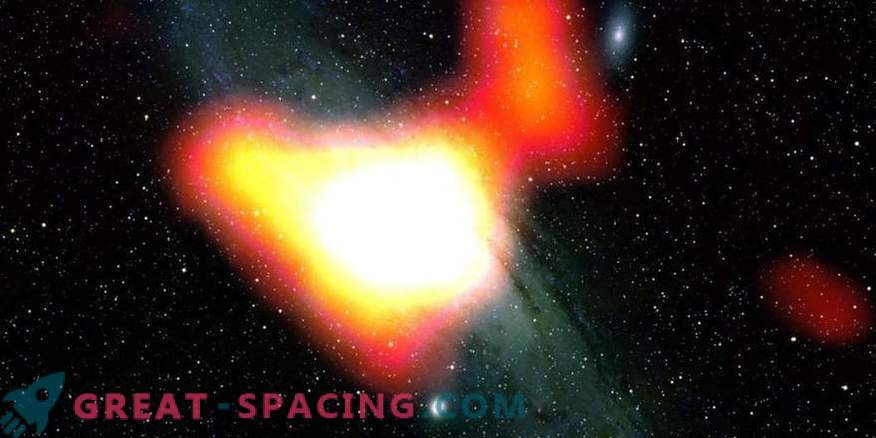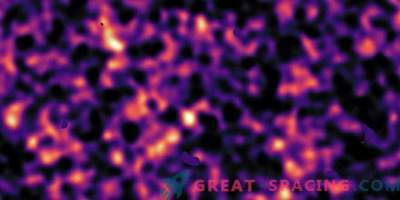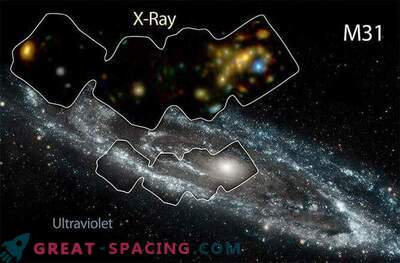A powerful gamma signal escaped from the core of a massive galaxy and, perhaps, discovered a compact area filled with dark matter particles.

Excess gamma rays (shown in yellow-white) in the center of M31 hints at an unexpected incident in the central region of the galaxy.
Something incredible happens in the core of Andromeda - the closest galaxy to the Milky Way.
Using the Fermi Space gamma telescope, astronomers were able to detect a powerful source of gamma radiation emanating from Andromeda. This may be the beginning of one of the greatest mysteries in modern cosmology.
Emissions of gamma radiation can be generated by the annihilation of dark matter particles. A similar signal was detected emanating from our galaxy.
Dark matter makes up almost 85% of the total mass in the Universe (and ordinary matter — all visible things — accounts for 15% of all matter). But since it does not interact with the electromagnetic force (that is, light), we cannot directly see it. However, it is possible to indirectly detect it by observing the gravitational effects of ordinary matter on galactic and cosmological scales. The essential hitch is that we do not know what we are dealing with. But the new Fermi observation will help shed some light.
Astrophysicists know that galaxies emit gamma rays, but the arrival of such a powerful gamma signal from the center of Andromeda hints at something serious.
“We believe that dark matter is concentrated in the inner regions of galaxies, so finding such a compact signal is incredibly amazing,” said astrophysicist Pierreick Martin from the National Center for Scientific Research and Research Institute for Astrophysics and Planetology in Toulouse (France).
When dark particles of matter (such as hypothetically weakly interacting massive particles) collide, they annihilate, releasing a sudden burst of energy. It appears as gamma rays. Therefore, where Fermi notices intense gamma-emitting areas, this may indicate the location of a dense cloud of dark matter.
There may be another explanation. The researchers note that a dense cluster of pulsars can also generate an intense gamma-radiation signal. But Andromeda is located 2.5 million light years from our planet, so there is no way to find individual sources of the pulsar. But it is also known that the Milky Way generates gamma radiation in the nucleus. Therefore, the researchers hope to compare the signal of Andromeda and our galaxy, in order to understand whether it comes from pulsars or from particles of matter annihilating in the nuclei of both galaxies.
“Our galaxy is very similar to Andromeda, which helps to study it. Thus, we will also learn more about the Milky Way and its formation, ”said researcher Regina Caputo from the Goddard Space Flight Center in Greenbelt, MD. “It's like living in a world where there are no mirrors. But you have a twin, through which you can better understand yourself. "











































